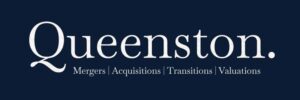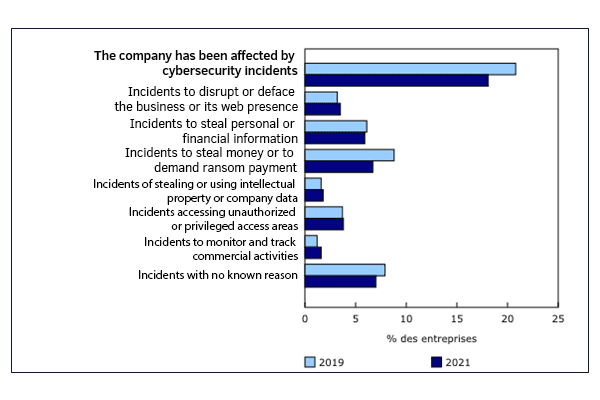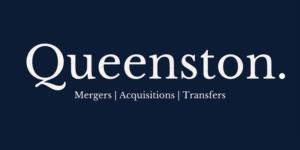Customer Relationship Management
Executive summary
Before 1980, customers didn’t need to be loyal, they were automatically. My father always bought Fords, always voted Liberal and practiced his religion.
The early 1980s brought a paradigm shift that became more pronounced with each passing year, reaching its peak in the early 2000s.
Each customer had to be won back each time they renewed a product. Gone was the visceral attachment to a brand, the consumer was shopping around.
But the companies didn’t give up. They used several ways to bring the customer back to them. Customer Relationship Management (CRM) was born, with the primary aim of building loyalty among fickle customers.
The IT industry is developing increasingly sophisticated applications known as Customer Relationship Management or CRM software. This class of software supports companies in their quest to build customer loyalty.
Customer relationship management
The beginnings of customer relationship management date back to the 80s. There were a few discreet attempts in the 70s, but nothing more. Today, no company would dream of surviving without practicing the basic principles.
1.- What is customer relationship management (CRM)?
It’s a set of actions taken by companies to build customer loyalty, develop their offering and generate referrals.
A little history
The prehistory of CRM
Until the early 80s, customer loyalty ruled the commercial world and many other aspects of our lives, including politics and religion.
As mentioned, my grandfather always owned Ford cars, my uncle Chevrolets. And they were proud of that loyalty.
At home, we ate Kellogg’s Special K for breakfast, nothing else. When we were good kids, my mother bought a box of Kellogg’s Frosted Flakes.
Recently, I saw a friend who had just bought an Audi. “I said to him, “Have you given up Mercedes? No,” he replied, “I’ve gone back to my old loves. Not a very loyal car buyer.
Paradigm shift
The 70s saw major social changes in terms of religious loyalty and the liberalization of behavior. In short, an era began that continues to this day. Consumers question their loyalty (allegiance) when the time comes to renew a good or service: cars, household appliances, food, even their financial advisor.
They ask themselves: “Am I satisfied with this supplier?
The latter are becoming increasingly aware of this, and are saying to themselves: “I have to win back my customers’ trust every time if I want them to buy from me”.
And so customer relationship management was born!
2.- Customer relationship management since 2000
It goes without saying that to manage a customer relationship, you need to have a relationship with the customer. Calls, meetings, e-mails, birthday cards, surveys, gifts and content marketing are all part of the CRM process.
Today, many companies are focusing on surveys. Your customer contacts customer service, and a satisfaction survey is sent out immediately.
Grocery stores invite you to complete a survey on their invoice in exchange for a chance to win a voucher. Every time you visit, they want to earn your loyalty.
3 – Customer relationship management in financial services
From the outset, it’s safe to say that this sector is lagging behind, even in 2023. Nearly five years ago, LIMRA (Life Insurance Marketing & Research Association) published a disturbing report on client retention among financial security advisors. The report revealed that a high number of Canadians would change financial advisors at least three times in their lifetime. Not because they were dissatisfied with their current advisor, but because he or she never contacted them.
Let me share Robert’s situation with you. In 1982, he bought term life insurance from a representative, let’s say Paul, that was renewable and convertible until he reached age 70. A few years later, Robert wanted to buy critical illness insurance. Having lost the contact details of Paul, who had never contacted him since selling the life insurance, Robert bought it from Joseph.
A year later, he bought an accident insurance policy from Pierre, since Joseph hadn’t given him any sign of life either.
Robert is approaching his 70th birthday and Paul doesn’t contact him to remind him of his life insurance maturities. Robert loses his benefits. He had to re-insure using Micheline’s services.
A few years later, Robert bought an annuity from another representative.
In this example, I’m not even mentioning the investment aspect.
Imagine all the commissions Paul would have earned if he had practiced the ABCs of customer relationship management: staying in touch with his customers.
4.- Customer relationship management system
Manually managing all the relationships of a customer base of 100, 200 or even 500 customers will quickly prove to be an impossible task.
Customer relationship management (CRM) software soon appeared on the market. Initially limited and difficult to learn, today’s CRMs bring together a panoply of functionalities to ensure optimal management of relationships and business opportunities.
Most CRMs are suitable for any market sector: dentists, car dealers, the financial sector, cable operators… All you have to do is model them. Others, such as Equisoft/Connect, are specifically designed for a particular market: the financial sector.
Here’s a non-exhaustive list of features to look for in CRM software for the financial sector.
- Business communications:
Whether during a meeting, a phone call, an exchange of e-mails or text messages, you exchange information that is critical to both you and your customer. You get to know them better, and their needs more and more. He gets to know you and what you can do for him.
A good CRM software package will enable you to consolidate all this information and the documents exchanged on both sides in one place. By the way. Compliance requires that you take notes of your meetings (in person or on the phone, keep your digital or paper exchanges).
You kill two birds with one stone: you meet certain Compliance requirements, and you make it easier to prepare for future meetings with this customer.
- Do you know the 10-contact rule?
The ABCs of marketing dictate that you should communicate with your best customers at least 10 times a year. But communicate what?
Content marketing is a strategy used to attract, engage and retain customers by creating and sharing articles, videos, podcasts and other media relevant to certain customer interests. In our case, their finances. The number of such mailings can vary from 4 to 12 per year.
Imagine Robert looking for critical illness insurance and receiving a newsletter from Paul about changes in RRSP rules. He’s not interested in the subject, but Paul reminds him that he’s still active as a financial advisor. Robert calls Paul and tells him about his desire for critical illness insurance. You can guess what happens next.
- Reminders
CRM software should facilitate the creation of reminders relevant to business development.
Imagine Paul has just closed his life insurance sale to his new client Robert, who is 35 at the time. He creates a reminder in his file on Robert’s 55th birthdayème .
On Robert’s 55th birthday, Paul called to wish him a happy birthday. At the same time, he says: “Robert, your life insurance policy is approaching expiry. I’d like to meet with you to discuss your options. Paul converts Robert’s term insurance to whole life.
- Targeted marketing
A new product has just come onto the market, say, critical illness insurance for children. Robert decides to use his CRM software to identify all his customers who have children. He prepares a sales pitch on the benefits of this new product and sends it to these customers. A few days later, Robert calls Paul and says: “Paul, my daughter has two young children. I told her about your mailing. She’s interested. I invite you to give her a call.
- Added value
As a very successful consultant told me 20 years ago: “Over the years, I’ve accumulated hundreds of business opportunities in my CRM. Every week, two or three of them appear in front of me. My assistants prepare the files, and all I have to do is close the sale.
What premium would you be willing to pay to get your hands on a clientele organized in this way?
- Dressing up the customer:
In conclusion, this representative added: “The phone never rings here. We call the right customer at the right time with the right product. First we sell him a tie, then we dress him from head to toe.” CRM software makes it possible to collate all a customer’s needs, throughout his life, and to call him at the right time with the right product.
CRM software is the fundamental tool that supports the paradigm shift mentioned above.
Customers want you to communicate with them.
CRM software collects all the information needed to communicate with customers. Whether by phone, text, e-mail, or mail.
CRM software records when to communicate with whom and on what subject.
5-What to look for in CRM software
A complete contact file: a good CRM allows you to see at a glance a customer’s personal information, well beyond their name, address and e-mail address. We also want to see :
- Spouse’s first and last names and a link to his/her file,
- The first and last names of thier children and a link to their file,
- The name of the company, if heor she’s in business, and a link to that profile,
- If not in business, employment information (employer, salary),
- Significant liabilities such as mortgage.
We also want to see :
- Its investments under our management,
- Insurance under our management,
- What is not under our management.
We also want to take a global view:
- Fields to segment our customer base,
- The ability to add or customize fields,
A good CRM enables us to consolidate all our activities with a given customer.
In terms of customer activities, we want to see :
- A way to consolidate all our meeting summaries (telephone, in person or via Zoom),
- A way of adding incoming and outgoing e-mails to these activities,
- A means of adding documents sent or received from the customer (by e-mail, post or hand delivery) to these activities.
A good CRM comes with a library of procedures or functions that allow us to exploit our customer data.
In terms of included procedures, we want to see
- A user-friendly search tool that lets you use all fields in a search,
- A user-friendly report generator for preparing reports using search results,
- A mailing tool (labels or e-mails),
- A tool for creating reminders and/or activities,
- If the software includes a Calendar and/or Messaging module, make sure it can synchronize with our smartphone,
- The same applies to the Contact plug,
- A customizable dashboard.
In short, CRM software lets you :
- Record all your activities with a customer in one place for future reference,
- Get a brief but complete picture of a customer,
- Find the follow-ups and sales opportunities to be pursued for each customer,
- Perform searches on all database fields and produce reports with the results,
- Facilitate the import of customer insurance and investment data,
- Ensure synchronization with smartphones.
Conclusion
Customer Relationship Management (CRM) technologies oversee all your company’s relationships and interactions with existing and prospective customers. The aim is simple: to optimize business relationships. CRM systems support companies in their efforts to stay connected to their customers, simplify processes and increase profitability.
A CRM solution helps you focus on your company’s interactions with various stakeholders (customers, employees, suppliers, etc.) throughout the relationship lifecycle.
With a technology tool like this, your enterprise value takes a major leap forward. When the time comes to plan your exit into retirement, you’ll be able to demonstrate the potential value of your clients. That’s how you justify a multiple at the top end of the range.
Martin Luc Derome, CEO
« Chief Emotional Office »
Queenston M&A Inc.
Customer relationship management Read More »















